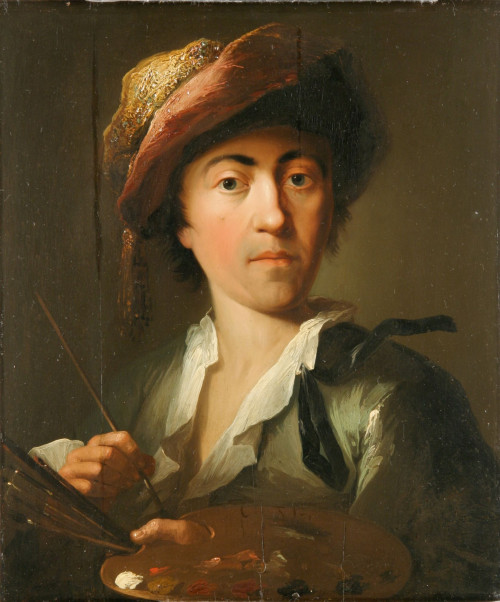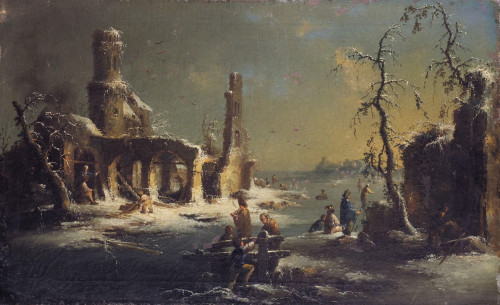The first room is dedicated to workshops and masters of the visual arts from the period of Goethe’s youth.
In the middle of the 18th century, art in Frankfurt was still considered a learnable and teachable handicraft. Masters imparted it in their workshops and organised themselves into guilds. A brisk art business prevailed in the city. Shaped by the late baroque, painters took their orientation above all from Dutch models and in their workshops specialized on subjects such as Rhine landscapes, nocturnal scenes, conflagrations, or still lifes. Numerous collections emerged in the city, and the still new scholarly treatment of art also flourished.
Johann Caspar Goethe was one of the Frankfurt collectors and promoters of art. He specialized in contemporary painting from his immediate environs and thus “for several years kept all of Frankfurt’s artists busy”. His son Johann Wolfgang reported that from his “earliest youth he knew” artists such as Schütz, Trautmann, and Seekatz and “often visited them in their workshop”, he was also well acquainted with the Morgenstern family of painters. The matter-of-course contact with art, the skill of precise observation practiced from an early age, but also the artistic taste of his family home remained formative throughout Goethe’s life.
Objects in the room
-

Johann Ludwig Ernst Morgenstern, Johann Friedrich Morgenstern, Carl Morgenstern
THE MORGENSTERN MINIATURE CABINET
1796 to 1830, folding cabinet with two doors, painting oil on wood
-

Justus Juncker
BESUCH IM ATELIER EINES MALERS
Around 1759/63, oil on copper
-

Justus Juncker
BESUCH IN DER WERKSTATT EINES BILDHAUERS
Around 1759/63, oil on copper
-

Johann Georg Trautmann
Self-portrait
1752, oil on wood
-

Johann Georg Edlinger
HENRICH SEBASTIAN HÜSGEN
1781, oil on canvas
-

Johann Daniel Bager
THE ARTIST AT THE WINDOW
1767, oil on oak wood
-

Johann Georg Trautmann
WINTER LANDSCAPE WITH BRIDGE AND BURNING BUILDINGS
Around 1759/63, oil on canvas
-

Johann Georg Trautmann
WINTER LANDSCAPE WITH A SNOWY RUIN
Around 1759/63, oil on canvas
-

Johann Georg Trautmann
Jahrmarktszene
Around 1759/63, oil on canvas
-

Johann Conrad Seekatz
KIRCHWEIHSZENE
Around 1759/63, oil on canvas
-

Justus Juncker
TROMPE-L’OEIL WITH SELF-PORTRAIT
1732, oil on canvas